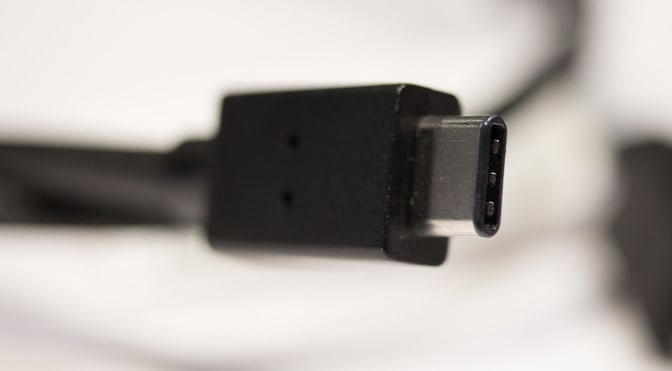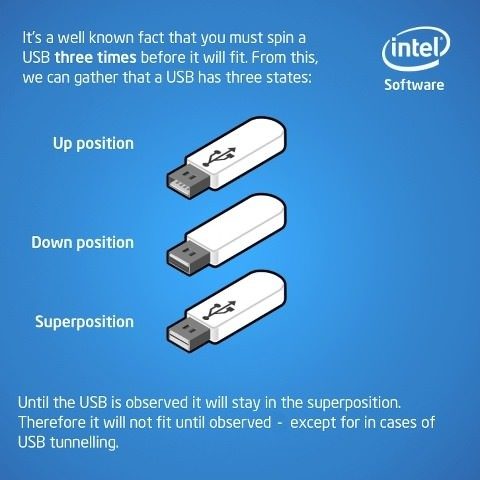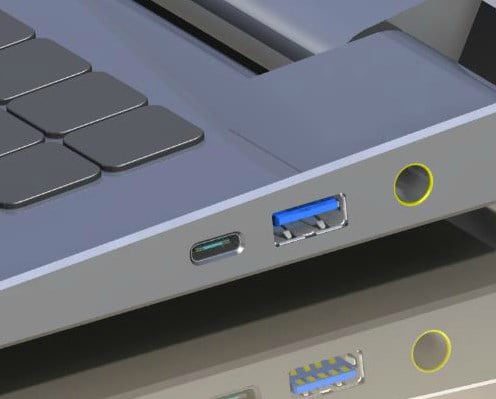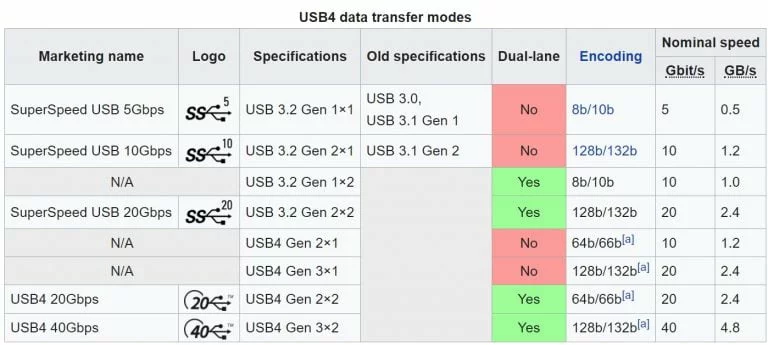For years, USB advanced at a predictable rate — USB2 was faster than USB, USB3 was faster than USB2. In the last few years, the once-simple standard has broadened and become more confusing. There are now multiple types of USB3, including USB 3.0, USB 3.1 Gen 1, USB 3.1 Gen 2, USB 3.2 Gen 1×1, USB 3.2 Gen 2×1, USB 3.2 Gen 1×2, and USB 3.2 Gen 2×2. Then, on top of that, there’s the question of USB-C. How does it fit in?
D0n’t feel bad if you find this confusing. The USB-IF has done everything it possibly could have to ensure nobody can make sense of which USB standard a device supports, partly by repeatedly changing the name of previous standards as it updates brand guidance. The following table shows the relationship of USB standards to each other
The following standards all refer to the exact same product: USB 3.2 Gen 1×1, USB 3.1 Gen 1, USB 3.0. These ports all transfer data at up to 5Gb/s. Similarly, USB 3.2 Gen 2×1 and USB 3.1 Gen 2 also refer to the exact same standard. Hardware that complies with this specification can transfer data at up to 10Gbit/s. I’m not sure if anyone is shipping USB 3.2 Gen 1×2, because it’s an odd hybrid with USB 3.0’s original encoding scheme but USB 3.1 Gen 2’s bandwidth. Finally, there’s USB 3.2 Gen 2×2, which is also it’s own specific standard without reference to previous products.
USB-C does not automatically mandate the use of any specific USB speed. USB-C is a physical cable standard that can support anything from USB2 to the latest USB 3.2 Gen 2×2 connection speeds, depending on the type of cable you own.
USB Type-C: Attempting to Fix an Age-Old Problem
The near-universal frustration over attempts to connect USB devices to computers has been a staple of nerd humor and lampooned in various ways until Intel finally found a way to take the joke quantum.
USB Type-C solves this problem with a universal connector that’s also capable of twice the theoretical throughput of USB 3.0 and can provide far more power. The downside to USB-C, unfortunately, is the issue of cable compatibility. In a world where most devices are increasingly moving to a common standard — USB-C — the flexibility of that standard has become its downfall. Unlike the old micro-USB cables of the mid-aughts, all USB-C cables are not created equal.
It is in your best interest to always use the USB-C cable provided by the device manufacturer, and never to buy a replacement cable assuming that any old brand will do. Look for brands specifically marketed as compatible with your device, stick to well-known products, and honestly, I’d check online before buying a USB-C cable for anything you care about. Some major companies, like Nintendo, have built their own non-standard USB-C implementations. Combine a non-standard vendor implementation with a non-standard cable manufacturer implementation, and what you get is a recipe for trouble (and dead hardware).
USB-C, USB 3.2 Aren’t Always Hooked Together
Just remember that USB-C doesn’t automatically specify any kind of performance level in and of itself. Some manufacturers also restrict certain operating modes depending on the type of cable and/or charger that you use. Phones may limit their use of fast charging, for example, so it’s important to check the standards your cable supports in a way that
The disconnect between USB 3.1’s performance standard and the USB Type-C connector has caused some confusion in the market to-date, but the cable compatibility issue is probably the bigger headache. One advantage of using USB-C (or Type-C, but USB-C is more popular) is that the standard provides up to 100W of power. More than a few laptops have launched in the past few years with USB-C support rather than a more traditional barrel plug. While USB-C doesn’t mandate a given performance level, it’s become more popular as USB speeds have climbed, and most laptops with USB-C will support transfer rates fast enough to handle any external SSD or HDD. The days of external storage being painfully slower than internal storage are over.
The USB 4.0 standard has been released, but it isn’t yet shipping in any products. It’s based on Intel’s Thunderbolt 3 with support for transfer rates up to 40Gb/s. The comprehensive chart with that standard included is here:






